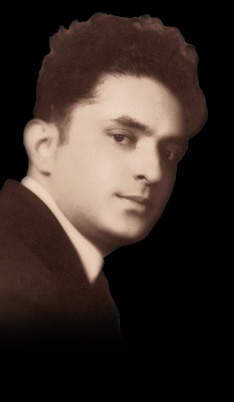

|
 |
| |
| The Book |
The Man Who Spoke to God is a scholarly and personal tribute to a world famous artist. Edited by his son with contributions by the most important thinkers and practitioners of cantorial and Jewish music, as well as music in general, it provides a comprehensive overview and analysis of Glantz’s contributions, including his ground-breaking research into Jewish Nu’sach; his pioneering approach to the performance of Jewish music; and his extraordinary ability to speak to the hearts of his listeners. It is an endeavor to define Leib Glantz’s historical importance within the culture of the Jewish people. |
| |
| Just as Glantz’s influence spread far beyond his audiences, the book’s significance extends beyond Glantz. Glantz’s legacy is, in large part, an argument for the primacy of orality in the Jewish tradition. Prayers, after all, can be maintained in text. However, music, vocal volume and tonality, on the other hand, must be actually heard to be effective. |
| |
| Leib Glantz (1898-1964) is considered by many as the greatest cantor that ever lived. For 100 years, cantors throughout the world have recognized his brilliance as a composer, interpreter, performer, as well as scholar and teacher of Jewish music. Glantz was the people’s cantor. Crowds filled the streets when he rehearsed or performed. His many admirers thrilled and wept with emotion at the sound of his voice. His music penetrated souls and inspired young people, many who would later become famous cantors themselves. |
| |
| The subordination of cantorial art to rabbinic learning was not always the case. During the Golden Age of Cha'za'nut (Cantorial), in the first half of the twentieth century, cantors were considered superstars among the Jewish people. Today, many cantors eschew traditional Jewish music in favor of popular, modern tunes, combining foreign elements that originally had no place in this traditional cultural art form. This book makes the case for how much is lost with this popularization of ritual. |
| |
| Ultimately, the book is framed by two emotional letters: one written in 1963 by Jerry (Ezra) Glantz, age 18, to his father, just three months before the cantor’s death; the other by a 23-year-old admirer from Holland, written just months ago. Taken together, the two letters, composed 40 years apart by two awe-inspired young Jewish men, reflect the timeliness and timelessness of Glantz’s art. |
|
|
The book consists of three parts:
- Writings and Lectures of Leib Glantz.
- Analyses of Leib Glantz's Historical Significance as a Cantor, a Composer, a Researcher, a Pedagogue and a Zionist Leader.
- Reflections on Leib Glantz.
The Appendixes include a comprehensive list of Glantz's 216 compositions, a list of his audio recordings, a list of his published music books and important historical documents.
The book is accompanied by two new compact disks with 30 of Glantz's recorded compositions, some which have never yet been published. |
|
|
|
|
| Copyright © 2007, by Dr. Jerry Glantz |
|
|